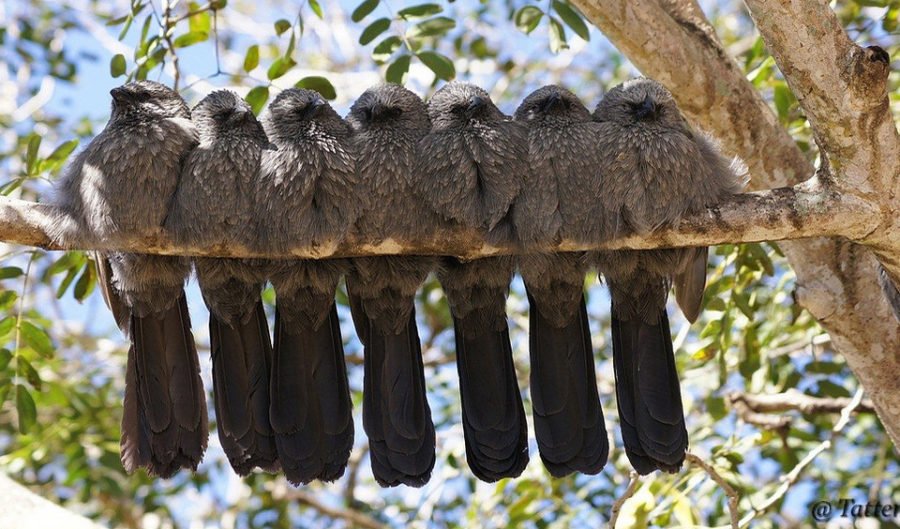Apostlebirds keep it all in the family

Bec Crew
Bec Crew

OKAY EVERYONE, YOU CAN stop looking – I’ve found my new favourite bird. You only have to look these guys up on Flickr to see how adorably social they are. They feed together, gather nesting materials together, cross the road responsibly together, and hang out in the trees together looking super snug.
With a wide range throughout eastern Australia and a single, isolated population in the Elliott and Katherine regions of the Northern Territory, the apostlebird (Struthidea cinerea) belongs to the Australian mudnester family (Corcoracidae), of which there is but one other member. And together with the white-winged chough (Corcorax melanorhamphos) – a blackish bird with hellish red eyes – the apostlebird maintains a strange nest, and an even stranger social group.
When an apostlebird builds its deep, cup-shaped nest made from dried grasses held together with mud and manure, it will share the experience with around nine other apostlebirds. This ‘breeding unit’ comprises a single dominant male and adult female, plus several juvenile birds from a previous breeding season that stuck around to help out.
Apostlebird chicks enjoy the big family life
These young birds will remain with their parents for an incredible 200 days. To put that in perspective, a pigeon chick typically leaves the nest after about 30 days, and even seagulls – known to shadow their parents for a long time – eventually break loose after 90 days or so.
But not apostlebirds – social groups are so important to them, they will team up with six to 20 other birds, doing everything together and telling each other about it very loudly.
That’s how the apostlebird got its name – after the 12 Biblical apostles who teamed up to follow Jesus. And that loud chattering is how it got its other name: the CWA bird. Which refers to the Country Women’s Association, because apparently these nattering birds used to remind people of their meetings.
Unfortunately, things get kinda ugly when either the dominant male or female dies in a mudnester family group. The remaining dominant bird will need to form a new family group by finding a lone adult to bond and breed with. If helper numbers are low, they will need to be strengthened, but often a newly paired male and female won’t have the help required to birth new offspring. So they go on the hunt for other birds’ offspring to bolster their ranks.
Apostlebirds kidnap babies to boost family
“Here I report unusual observations of groups raiding their neighbours and kidnapping their recently fledged young,” Robert B. Heinsohn from the Department of Zoology at the Australian National University wrote back in 1991 regarding white-winged choughs he’d been observing. “These young are unrelated to their kidnappers, yet receive normal levels of parental care for the remainder of their transition to foraging independence. They eventually become helpers in their new groups.”
As in, the kidnapped become the kidnappers. That ‘family group’ thing is starting to look a whole lot more creepy now.

